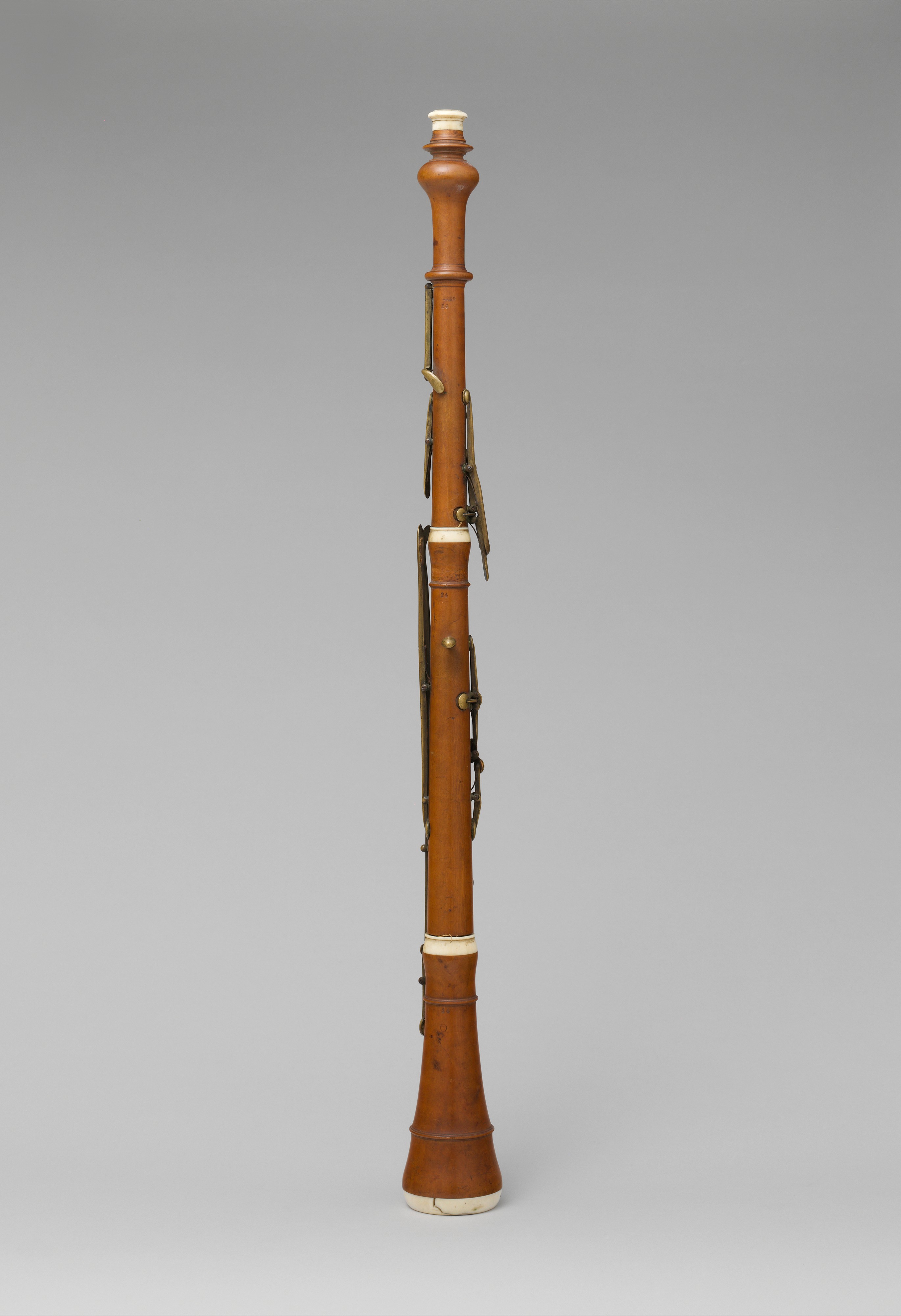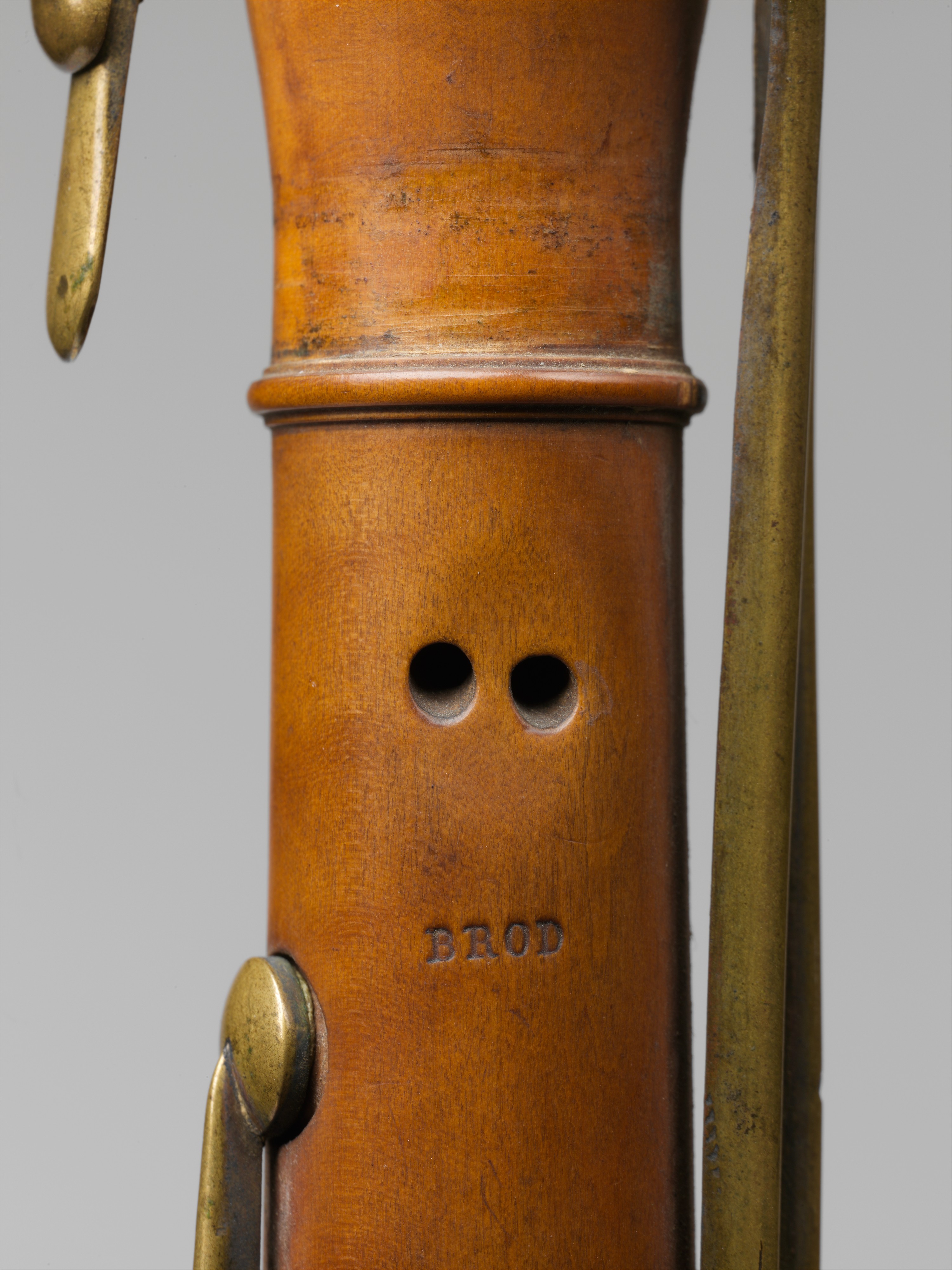Oboe
Henri Brod French
Henri Brod was a prominent performer, serving as first oboe of the Paris Opera and professor at the Conservatoire. In conjuction with his brother, he was also active as a maker. Brod is credited with various technical improvements to the instrument, two of which are found on this instrument: a rocking lever to connect the e'-flat and c' touchpiece and the d' half-hole key (still in use), which gives precise partial covering of the tone hole to facilitate overblowing in the upper octave. Despite technical developments that were increasingly being applied to the oboe and other woodwind imnstruments during the middle decades of the nineteenth century, Brod wrote that the oboe was most effective in slow, melodic passages.
Techical description:
Simple system oboe, stamped on all three sections with "BROD" (front) and "24" (rear side). The oboe is composed of three sections of boxwood and mounted with ivory sleeves. The wood shows weak burls in some areas of the upper joint and foot. The thumb rest consists of a screwed-in pivot of brass. The third and fourth finger holes have double bores. The key mechanism is made of brass and mounted in pillars. The system is comprised of 11 length-keys with B-natural as lowest key. The workshop of the brothers Brod was very innovative and invented numerous gadgets and improvements. In this oboe the following arrangements were not common if at all in use by other makers of the time:
- New inventions: 1) a rocking lever that connects the E-flat and C-touch-piece, allowing a swift transition between E-flat and C; 2) a half-hole plate to produce a clear C-sharp and C; 3) some keys are equipped with guide pins of the same shape as the pivots.
- Keys not universally used at the time: two separate keys for e-flat key for the left and right hand, a double high C key, a half-hole plate, and a speaker key.
Length: 218 mm (upper joint) + 209 mm (middle joint) + 139 mm (foot joint) = 566 mm (whole)
Due to rights restrictions, this image cannot be enlarged, viewed at full screen, or downloaded.
This artwork is meant to be viewed from right to left. Scroll left to view more.




